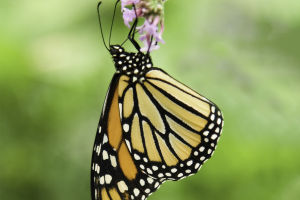In a rare and hopeful turn of events, six critically endangered Mekong giant catfish were recently caught and released in Cambodia, sparking optimism for the survival of one of the world’s largest and most elusive freshwater fish species.
These enormous creatures, known for growing up to 10 feet long and weighing as much as 300 kilograms (661 pounds), are native to the Mekong River. Once found throughout the entire length of the river, their population has dramatically dwindled by 80% in recent decades.
A Declining Species
The Mekong giant catfish is now confined to Southeast Asia’s Mekong River, stretching across Cambodia, Laos, Thailand, and Vietnam, with occasional sightings in northern China. Historically, the species thrived along the 4,900-kilometer (3,044-mile)-long river, but various threats have caused their numbers to plummet.
Overfishing, dams that obstruct migration routes, and environmental changes have significantly disrupted their habitat and reproductive patterns.
The discovery of six giant catfish within just five days is considered an unprecedented event. In a region where most people rely on the Mekong River for their livelihoods but rarely encounter these fish, finding such a large number is seen as a promising sign for the species' future.
A Significant Discovery
The first two catfish were caught in the Tonle Sap River, a tributary of the Mekong River near Cambodia's capital, Phnom Penh. These fish were tagged for identification and released back into the wild.
Just days later, four more giant catfish were caught, two of which were over 2 meters (6.5 feet) long and weighed between 120 and 131 kilograms (264 and 288 pounds). These fish were believed to be migrating from their floodplain habitats in the Tonle Sap Lake, likely heading toward their spawning grounds in northern Cambodia, Laos, or Thailand.
Dr. Zeb Hogan, a biologist from the University of Nevada Reno who leads the U.S. Agency for International Development-funded Wonders of the Mekong project, emphasized the importance of these findings. He noted that although the species is not yet on the verge of extinction, there is still critical work to be done in conservation efforts to reverse the trend of decline.
Conservation Efforts and Insights
Over the past two decades, scientists and conservation groups, including the Wonders of the Mekong and the Cambodian Fisheries Administration, have made significant strides in understanding the giant catfish’s behavior.
By catching, tagging, and releasing around 100 of these fish, researchers have learned valuable information about their migration patterns, habitats, and the overall health of the species.
This knowledge is crucial for establishing migration corridors and protecting habitats. It helps guide conservation measures to ensure the survival of the giant catfish and other species living in the Mekong River.
Cultural Significance and Local Involvement
The Mekong giant catfish is deeply embedded in the culture of the region. It is depicted in ancient cave paintings, revered in local folklore, and regarded as a symbol of the river, whose fisheries are vital to the livelihood of millions. As a key part of the ecosystem, the catfish’s health reflects the broader well-being of the river.
Local communities have been instrumental in conservation efforts. Fishermen now understand the importance of reporting accidental catches of endangered species. By working with researchers, they help gather critical data on the fish and ensure their safe release back into the river.
Heng Kong, the director of Cambodia’s Inland Fisheries Research and Development Institute, highlighted the vital role that local cooperation plays in these efforts.
A Bright Future for the Mekong River
The recent catch of four giant catfish in a single day is being hailed as the “big fish story of the century for the Mekong.” It demonstrates that despite the environmental pressures facing the region, the Mekong River’s fish population remains resilient.
Brian Eyler, director of the Southeast Asia Program at the Stimson Center, emphasized the importance of preserving the unique biodiversity of the Mekong and ensuring that these extraordinary fish populations are protected for future generations.
In conclusion, while the road to recovery for the Mekong giant catfish and other species is far from over, the recent discoveries offer a glimmer of hope for their continued survival. With continued efforts and collaboration between scientists, local communities, and conservationists, the mighty fish of the Mekong can thrive once again.
Conservation Efforts in Cambodia Saving Mekong Catfish
Video by Inside Edition


